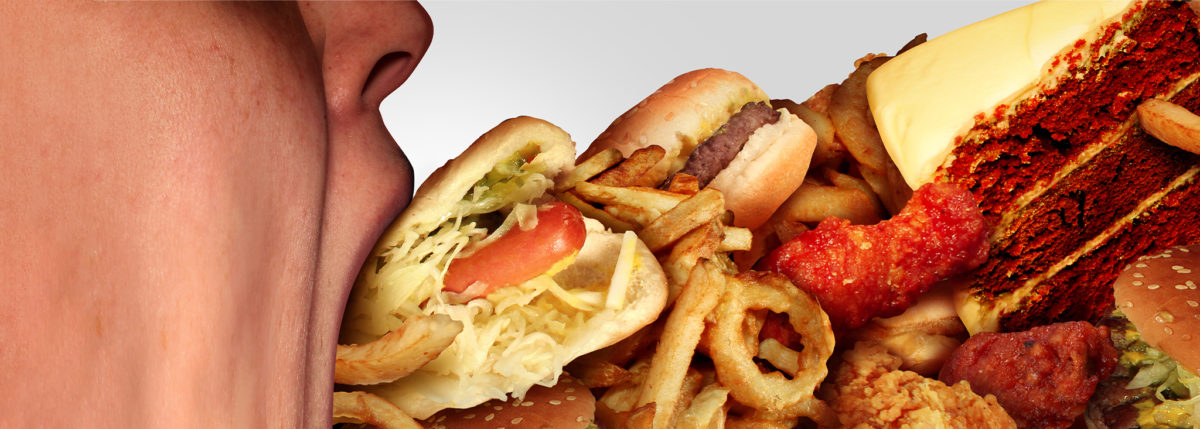In Praise of The Panic Munchies
Lumbering towards the pantry, eyes rimmed with sleep, every movement desperate and awkward, a figure emerges. It enters the pantry, and a light flicks on. There are crinkling sounds and rummaging sounds. A moment later it emerges, arms full of corn chips, cookies and other carb-rich fodder.
The figure, who has a low blood sugar, is about to sit down at the kitchen table and engage in a frenzy of gluttony that would make Werner Herzog turn his head to the side and whisper something about the meaningless savagery of nature.
The figure is me. I have The Panic Munchies.
My two brothers and I all have type 1 diabetes. When we get low, extreme hunger can afflict us, and under the right conditions each of us can demolish half of the fridge. (The three of us together can demolish 1.5 fridges.) Our term for this phenomenon is “The Panic Munchies.”
The Panic Munchies are a real thing. Ask any person with type 1 diabetes (T1D), and you’ll hear stories about eating an entire bag of chocolate chips, drinking two liters of Sprite in one sitting, or demolishing half of a cheesecake. There does not, however, appear to be a good scientific term for this phenomenon. “Polyphagia” is the catchall term for excessive hunger (my preferred translation from the Greek is “very much devouring”), but that word can refer to several things that have nothing to do with diabetes.
“Polyphagia” seems like an inadequate term for what we’re actually talking about. “The Panic Munchies,” aside from being less pretentious, is a more precise and evocative phrase.
Anyway, what do The Panic Munchies feel like? A hungry panic. A panicky hunger. Your palms sweat, your hands shake, sometimes you can feel yourself quaking all the way through your throat and arms. Anxiety thunders in your brain, and every difficulty seems life threatening.
In a sense, the threat is real. Your brain is starving to death. The human brain is a picky eater: it requires glucose to function, and will accept nothing else. Other tissues can use alternative fuels, but gray matter needs simple sugar. Without it, your brain begins to shut off.
I am not a neurochemist, but it makes intuitive sense to me that a starving brain produces lots and lots of anxiety. When you have a genuine case of The Panic Munchies, the anxiety intensifies and contracts. Your life shrinks to a simple equation: Food + Now = Survival.
It’s a compelling equation, the kind that makes abstract mathematics seem like a feeble joke. Your hunger drags you into the kitchen, into a break room, or towards a gas station: wherever there’s food. You don’t have a choice. With the worst low blood sugars, you can’t think straight. For a few minutes, your entire self is compressed to a core of molten hunger.
Once you start consuming sugar, you’re probably going to be okay. But as soon as your body registers, “Food!”—The Panic Munchies accelerate into their next phase. You want more and more. The more you eat, the more your starving brain demands to be fed. The Panic Munchies could probably help actors understand the experience of being a zombie who desires nothing except brains. Only, in this case, your brain is the zombie.
For me, the worst of it arrives about five minutes in. Hunger becomes a physical ache, not just in the belly but also in the limbs, and even when you’re aware you should slow down, you can’t.
This can be bad. The American Diabetes Association recommends treating lows with 15-20 grams of carbohydrates—usually an insufficient dose, in my experience—one solution including “two tablespoons of raisins.”
People with diabetes who have experienced actual, real-world hypoglycemia will know that The Panic Munchies can catapult your carb intake to over 50 grams. Or 100. Or 150. That’s a lot of raisins.
But the ADA is ultimately right. Exceed 20 grams of carbs and you might be over-treating. The Panic Munchies can lead to wretched highs. Even worse, going so low and then so high can cause one’s blood sugar to “yo-yo,” or jump and dive dramatically over the course of hours, leading to all kinds of unpleasantness.
The Panic munchies are therefore bad from a medical point of view. Don’t over-treat! Stay reasonable! Everyone knows that. Here’s the problem: when your brain is starving, the faculty of reason becomes puny and frail. The Panic Munchies toss reason aside like an NFL running back facing an 8th grade tackler.
And if you can keep a secret, dear reader, I’ll tell you something else. The Panic Munchies are kind of fun. Perhaps the thought is perverse, but it’s pleasurable to know diving headfirst into a bag of chocolate chips is in some sense an act that saves your life.
There’s also a weird kind of dignity to The Panic Munchies. They prove that there is something inside of you that wants to survive. You become aware of the vigor in your blood, the humming energy of our human survival instinct. It’s reassuring to become aware of that vigor.
I don’t want to get too carried away with this. You shouldn’t over-treat your lows. Still, I can’t shake the feeling that The Panic Munchies deserve recognition and adequate classification. They are a very human experience that blends suffering, pleasure and insight. They’re also a uniquely diabetic experience.
So, next time you’re eating corn chips at 3 a.m. in a cold sweat, try to remember that the Panic Munchies have value. They keep you alive. Exalt them.
 Want to meet others who just get it? Join the Beyond Type 1 app today!
Want to meet others who just get it? Join the Beyond Type 1 app today!





